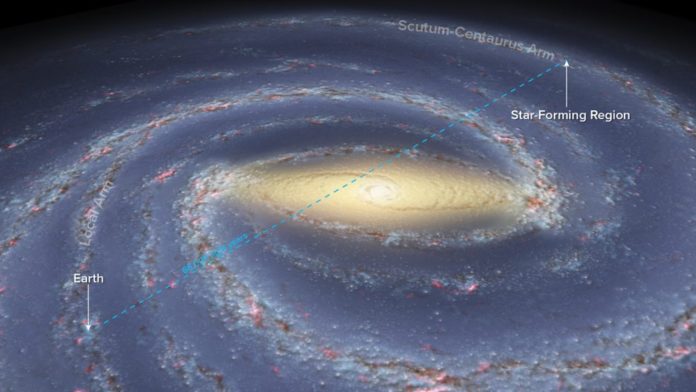Astronomers from the Max Planck Institute for Radio Astronomy have measured the distance to a star-forming region on the opposite side of our Milky Way Galaxy from the Sun. For this, they used an old astronomy trick, trigonometric parallax.
Distance measurements are crucial for an understanding of the structure of the Milky Way. Because we cannot see our Galaxy face-on, we can only map its structure by measuring distances to objects elsewhere in the Galaxy.
The technique trigonometric parallax was first used by Friedrich Wilhelm Bessel in 1838. He measured the distance to the star 61 Cygni in the constellation of the Swan.
Using the technique, scientists measured the apparent shift in the sky position of a celestial object as seen from opposite sides of the Earth’s orbit around the Sun.
Measuring the angle of an object’s apparent shift in position along these lines enables astronomers to utilize straightforward trigonometry to specifically ascertain the separation to that protest. The smaller the measured angle, the greater the distance is.
In the framework of the Bar and Spiral Structure Legacy (BeSSeL) Moon.
Alberto Sanna, of the Max Planck Institute for Radio Astronomy in Germany (MPIfR) said, “Using the VLBA, we now can accurately map the whole extent of our Galaxy.”
VLBA measured the distance to a region where new stars are being formed. The region includes areas where molecules of water and methanol act as natural amplifiers of radio signals masers, the radio-wave equivalent of lasers for light waves. This impact makes the radio signals bright and promptly recognizable with radio telescopes.
Sanna said, “With the VLBA, we now have the capability to measure enough distances to accurately trace the Galaxy‘s spiral arms and learn their true shapes.”
MPIfR’s Karl Menten said, “So we have plenty of ‘mileposts’ to use for our mapping project. But this one is special: Looking all the way through the Milky Way, past its center, way out into the other side.”
